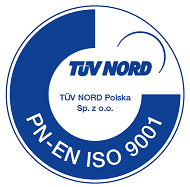Data archiving
The data obtained from the AR dataloggers can be stored in disk, floppy or external mass storage archives. This data are organized in files – blocks of one day length – those blocks are indivisible and basic units of data for LOGGER program. Having been written once, in case they are complete, it won't be overwritten anymore, even if specified once again for transmission. A special data protection system detecting every trial of unauthorized data modification and a complex procedure of identification the register from where data had been transmitted have been implemented – so that neither data replacement nor its fabrication or falsification is possible. Data transmission, depending on the data amount to be sent and the type of transmission line (serial link or network interface), can take quite much time (from couple of minutes up to several hours). Nevertheless the transmission is performed in the background, so other tasks can be done in the same time. The LOGGER application can be minimized, only a small transmission progress window is then displayed (see fig. 19.1) to let the operator know what data are currently transmitted. This window can be moved to any place on the screen.
In order to transmit data one should define the transmission range. A special dialog window (see fig. 23) enables to enter the beginning and the end of data to transmit. This window shows the user the data range which is available in the register – this is the default setting for the transmission, but one can freely select less data. Usually data is transmitted in one-day blocks but it is also possible to transmit current (not finished) day. In this case one should remember to retransmit this data next day in order to have complete file comprising of all 24 hours.
To perform data archiving one should set the physical connection between the computer and the register and after do the following:
- From menu File select Transmission.
- The Choose shaft dialog opens
- Choose the datalogger (shaft) from where we want to transmit data.
- The Enter transmission time range dialog opens, the date and time fields are by default filled in with values taken from the datalogger
- Enter From and To dates and times in the format: yy-mm-dd hh:mm or leave default settings in order to transmit whole datalogger memory contents
- Apply OK button to confirm


